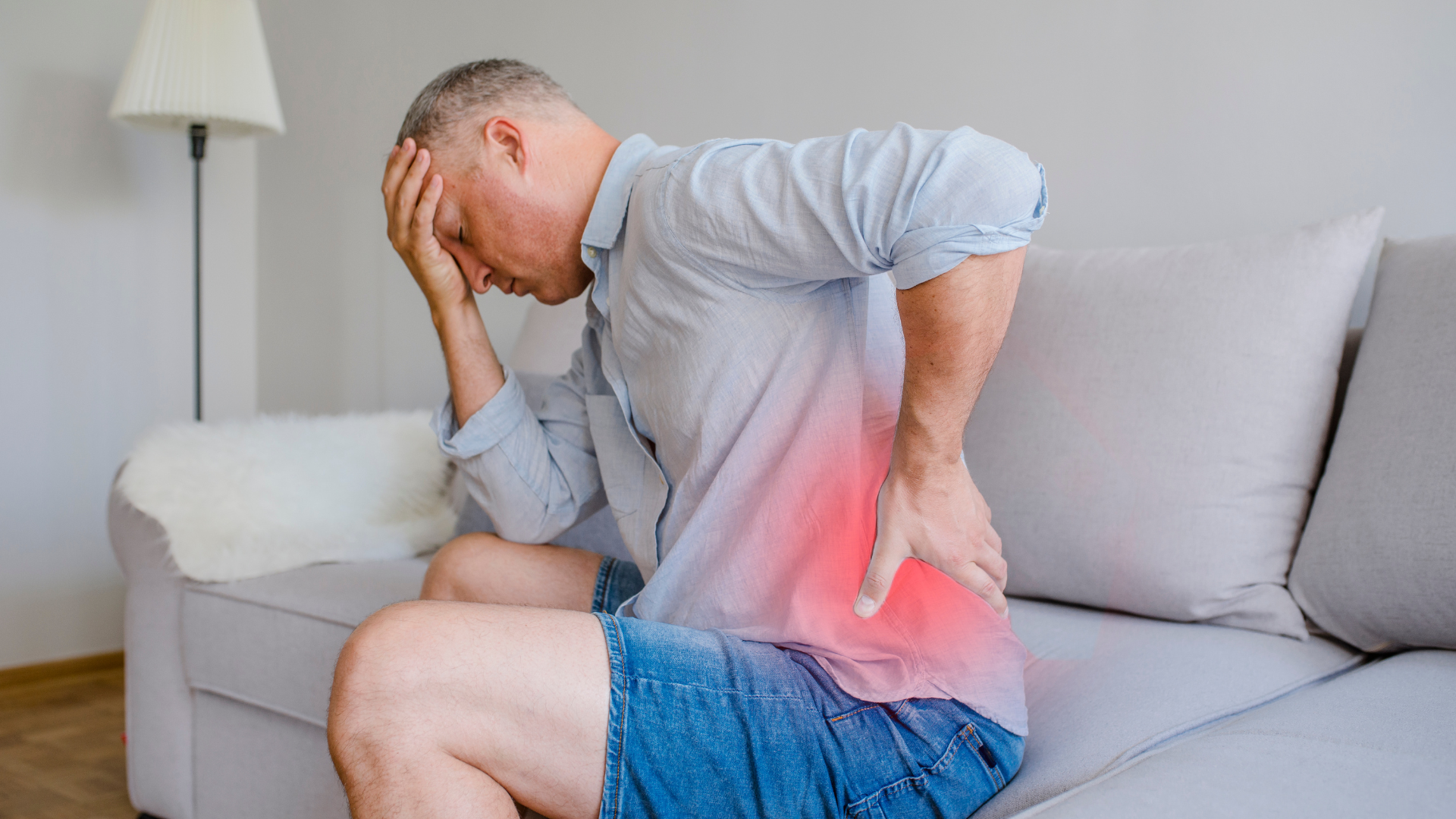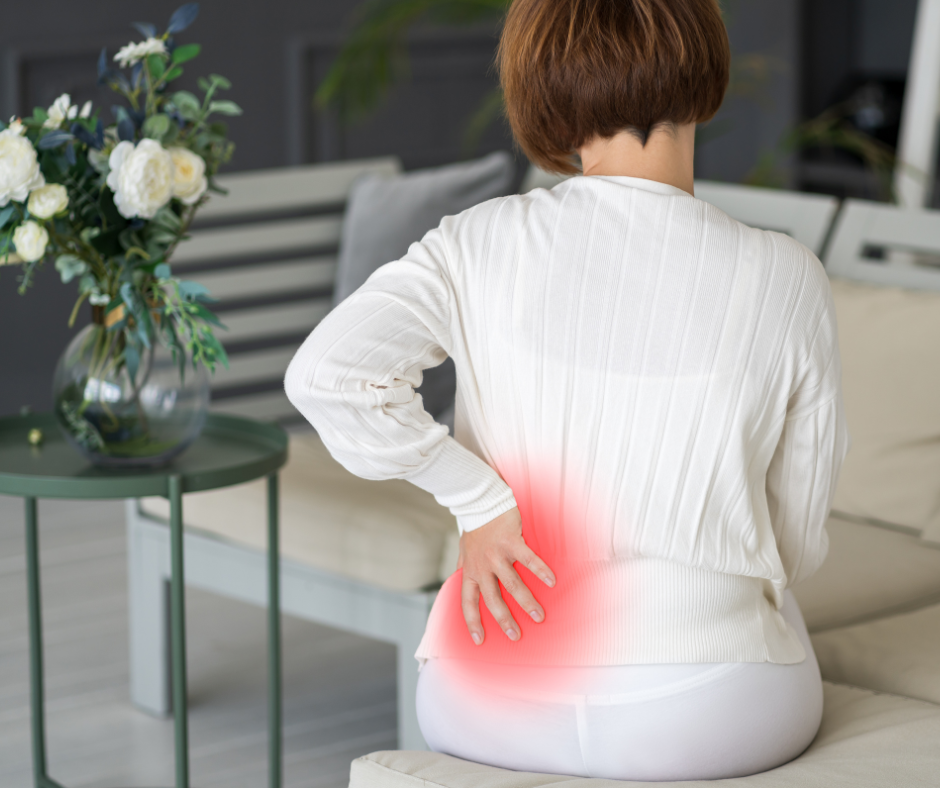Optimizing Lower Back Pain Treatment: The Functional Electrotherapy Approach
Musculoskeletal disorders are a major public health concern, significantly impacting individual quality of life and generating substantial costs for the healthcare system." (Collette et al., 2013)
Low back pain is a significant issue among musculoskeletal disorders. Indeed, its lifetime prevalence is estimated at 84%, with about 55% of patients experiencing at least 10 episodes throughout their lives. (Donelson et al., 2012) With a point prevalence of around 25%, chronic lower back pain represents a major health burden and is classified as the most disabling condition in terms of global morbidity burden.
With such high prevalence, it also represents our main clientele for musculoskeletal injuries. In this context, it is essential to adopt effective and holistic approaches for pain management, particularly by promoting self-management. (Tousignant-Laflamme et al., 2017)
Navigating the evidence maze.
According to a systematic review of clinical practice guidelines for the management of musculoskeletal disorders and low back pain, the care provided must be patient-centered, i.e., placing the patient at the heart of medical management. (Lin et al., 2020) This is a fundamental principle.
This means that care must consider each patient's unique situation, use clear communication, and involve the patient in shared decision-making regarding their management. According to ten clinical practice guidelines, this education aims to encourage self-management and/or inform and reassure patients about their condition, including aspects such as prognosis and psychosocial factors.
In all guidelines, this education or information is considered an integral part of care, complementing active approaches through physical activity, exercises, and other treatments. (Lin et al., 2020)
Rethinking the Use of TENS in an active approach: Functional Electrotherapy
How to steer towards evidence-based practice and encourage self-management through an active approach while alleviating pain? Are pharmacological approaches the only solution? We have an effective tool for pain management in physiotherapy: transcutaneous electrical nerve stimulation (TENS).
Why not integrate it into a framework of functional electrotherapy? This use allows the patient to incorporate electrotherapy into daily and domestic life activities as well as exercises, aiming for optimal functional performance. It is a modality integrated into an evidence-based practice.
TENS should be considered as a complement to standard care for the relief of lower back pain, as it can be a simple and cost-effective proposition since it can be self-administered regularly at home or during daily activities (Johnson et al., 2022; Travers et al., 2020; C. G. T. Vance et al., 2022). To ensure effective self-management, advice and education provided by a physiotherapy professional should be offered, promoting the patient's autonomy while considering their biopsychosocial needs, dosimetry, and dosage tailored to signs, symptoms, and prognosis (Travers et al., 2020; C. G. T. Vance et al., 2022).
Patients' maladaptive cognitive behaviors and activity patterns must also be taken into account when educating patients, aiming to guide them towards gradual exposure to activities with the use of TENS. For example, patients with kinesiophobia or avoidance tendencies should incorporate TENS during functional gradual exposure, while those with persistent behavioral patterns might require additional education on task awareness and use it during short periods of rest. It's about combining evidence-based approaches, involving the patient in their home self-management, and promoting pain management strategies without adverse effects.
“TENS should be systematically considered in the decision-making process and in the development of care protocols to combat pain, particularly at home. Indeed, when properly applied, it is safe and can be very effective in relieving pain to limit the use of riskier options.” (Larochelle, 2017)
When used appropriately and in accordance with chronic pain guidelines, TENS can maximize its effectiveness for patients needing pain management tools to improve their functional abilities in daily tasks, household chores, and work. It is our responsibility to equip and educate patients with the necessary tools and education on proper use.
Adapting our educational approach to their context, needs, and goals by empowering them to take charge of their pain management journey involves not only providing tools and techniques; it's about instilling the confidence and autonomy needed to navigate their own path towards pain management.
At SET, our priority is to accompany your treatment plans with your patients, focusing on close collaboration to maximize the effectiveness of home treatment. We understand the importance of clear and precise communication to identify and respond to each patient's specific needs.
Through our recommendation tool, we facilitate the establishment of a care plan tailored to your therapeutic goals, thus enhancing rehabilitation outcomes for the benefit of the patient.
To explore how our expertise in functional electrotherapy can enrich your practice and improve your patients' treatment journey, we invite you to contact one of our experts.
Together, let's progress towards a comprehensive approach from the clinic to your patients' homes for optimal results.
Références
Donelson R, McIntosh G, Hall H. Is it time to rethink the typical course of low back pain? PM R. 2012;4(6):394–401; quiz 400.
Tousignant-Laflamme, Y., Martel, M. O., Joshi, A., & Cook, C. (2017). Rehabilitation management of low back pain : Time to pull it all together! Journal of Pain Research, Volume 10, 2373‑2385. https://doi.org/10.2147/JPR.S146485
Larochelle, Jean-Louis, La stimulation électrique au service de la population dans la lutte contre la douleur, Physio-Québec, 2017
Lin, I., Wiles, L., Waller, R., Goucke, R., Nagree, Y., Gibberd, M., Straker, L., Maher, C. G., & O’Sullivan, P. P. B. (2020).
What does best practice care for musculoskeletal pain look like? Eleven consistent recommendations from high-quality clinical practice guidelines: systematic review. British Journal of Sports Medicine, 54(2), 79‑86. https://doi.org/10.1136/bjsports-2018-099878
Johnson, M. I., Paley, C. A., Jones, G., Mulvey, M. R., & Wittkopf, P. G. (2022). Efficacy and safety of transcutaneous electrical nerve stimulation (TENS) for acute and chronic pain in adults : A systematic review and meta-analysis of 381 studies (the meta-TENS study). BMJ Open, 12(2), e051073. https://doi.org/10.1136/bmjopen-2021-051073
Travers, M. J., O’Connell, N. E., Tugwell, P., Eccleston, C., & Gibson, W. (2020). Transcutaneous electrical nerve stimulation (TENS) for chronic pain : The opportunity to begin again. Cochrane Database of Systematic Reviews. https://doi.org/10.1002/14651858.ED000139
Vance, C. G., Dailey, D. L., Rakel, B. A., & Sluka, K. A. (2014). Using TENS for pain control : The state of the evidence. Pain Management, 4(3), 197‑209. https://doi.org/10.2217/pmt.14.13
Connectez avec nous sur les médias sociaux

















